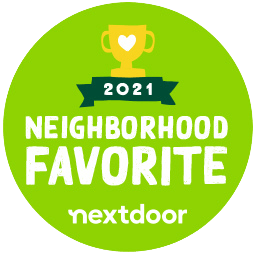🐾Allow 3 minutes to read.
Raise your hand if the dry, cold weather wreaks absolute havoc on your hair, skin and nails. On second thought, we’ll keep our hands down… our brittle nails and unkempt cuticles are screaming to be brought to the spa! Manicures and pedicures are a wonderful luxury when we feel like pampering ourselves (and when we actually have time for some relaxation), but for our pets, regular nail trimmings are extremely important.
Pet nails tend to need more upkeep in the winter months for a handful of reasons. Dogs aren’t outside as often, running around on concrete and other hard surfaces. Doing so can actually wear down longer nails, allowing for more time between nail trims. Dogs that get more exercise on hard surfaces tend to need less-frequent nail trims. Many cats (and an increasing number of dogs) are spending all of their time indoors, even during the summer months. These pets have no opportunities to naturally wear down their nail lengths. Cat owners: invest in a good scratching post for your cat! For more information on cat scratching behaviors, click here.
Raise your hand if the dry, cold weather wreaks absolute havoc on your hair, skin and nails. On second thought, we’ll keep our hands down… our brittle nails and unkempt cuticles are screaming to be brought to the spa! Manicures and pedicures are a wonderful luxury when we feel like pampering ourselves (and when we actually have time for some relaxation), but for our pets, regular nail trimmings are extremely important.
Pet nails tend to need more upkeep in the winter months for a handful of reasons. Dogs aren’t outside as often, running around on concrete and other hard surfaces. Doing so can actually wear down longer nails, allowing for more time between nail trims. Dogs that get more exercise on hard surfaces tend to need less-frequent nail trims. Many cats (and an increasing number of dogs) are spending all of their time indoors, even during the summer months. These pets have no opportunities to naturally wear down their nail lengths. Cat owners: invest in a good scratching post for your cat! For more information on cat scratching behaviors, click here.
Why are longer nails an issue?
Long pet nails are at risk of catching on things. It’s not uncommon for a pet’s overgrown nails to snag on carpet, curtains or bedding, and this can rip a nail right off. This is quite painful and (depending on how serious the tear is) often requires veterinary care.
Longer nails are also less comfortable for a dog or cat to walk on, and can cause them to slip on surfaces like hardwood and tile. As a pet’s nails hit the floor, the weight of their body puts pressure directly on the nail bed. Pets with longer nails will often distribute their weight differently in order to reduce discomfort, and this can affect the way their toe and paw joints align. This in turn will make your pet more susceptible to injury. If you have a senior pet who seems to be struggling to walk recently, check their nails. While joint pain and arthritis are common causes of reduced mobility in aging pets, long nails could also be a contributing factor.
If pet nails are neglected for too long, they can actually curve under and embed themselves into the paw pad. We see this most commonly in cats. We don’t need to explain how painful this is for a pet!
Longer nails are also less comfortable for a dog or cat to walk on, and can cause them to slip on surfaces like hardwood and tile. As a pet’s nails hit the floor, the weight of their body puts pressure directly on the nail bed. Pets with longer nails will often distribute their weight differently in order to reduce discomfort, and this can affect the way their toe and paw joints align. This in turn will make your pet more susceptible to injury. If you have a senior pet who seems to be struggling to walk recently, check their nails. While joint pain and arthritis are common causes of reduced mobility in aging pets, long nails could also be a contributing factor.
If pet nails are neglected for too long, they can actually curve under and embed themselves into the paw pad. We see this most commonly in cats. We don’t need to explain how painful this is for a pet!
How often should my pet's nails be trimmed?
Every pet’s nails grow at different rates, but a good rule of thumb is to clip them every 6-8 weeks. If the nail quick (the blood vessel and nerve within the nail) is really long, you may not be able to cut your pet’s nails short enough. The quick will bleed if it’s cut into, and this hurts quite a bit. For pets with longer quicks, we recommend trimming the nails back every two to three weeks until the quick recedes and the nail is more normal in length.
You can also monitor the nail length as time goes on — the nails should not be long enough to touch the floor. If you can hear your dog coming down the hall by the click-click of their nails, it’s time for a mani-pedi.
You can also monitor the nail length as time goes on — the nails should not be long enough to touch the floor. If you can hear your dog coming down the hall by the click-click of their nails, it’s time for a mani-pedi.




What about dewclaws?
A dewclaw is the nail located on the first digit, inside a pet’s leg. This is the equivalent to a thumb for a pet. Some dogs have four dewclaws, some have two, and others don’t have any at all. Cats have dewclaws on their front feet. If they are polydactyl, they’ll have an increased number of nails on both the front and back feet. We also see polydactyl traits in certain dog breeds like Great Pyrenees.
The dewclaw nails can be more prone to catching on things and tearing, and sometimes they are surgically removed. These nails absolutely need to be trimmed, sometimes even more often than the other nails.
The dewclaw nails can be more prone to catching on things and tearing, and sometimes they are surgically removed. These nails absolutely need to be trimmed, sometimes even more often than the other nails.
As you can see, regular nail trimming is very important for pet safety and comfort. If you don’t want to schedule a vet appointment every time your pet needs a mani-pedi, ask your vet for a demonstration! Nail trimming is pretty easy, especially if you can engage the help of a second person to distract your pet with treats during the process!






